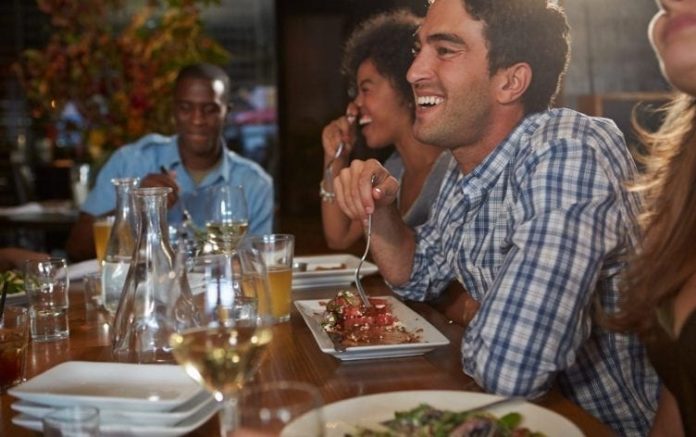
Why do you think you eat popcorn at the movies? Because it’s warm, salty, buttery and tastes so good, right? Or is it something else?
Psychology researchers David Neal and Wendy Wood sought to find out. In an experiment in 2011, they invited people who loved to eat popcorn at the movies to a movie theater. They gave half the participants water and fresh, delicious popcorn in a big box. The other half got water and unsalted, week-old, stale popcorn in identical boxes. Then they weighed how much the participants ate of the fresh popcorn versus the stale popcorn.
No matter if it was stale or fresh, the two groups ate the exact same amount of popcorn.
Dr. Brian Wansink, who started the Cornell Food Lab, coined this behavior “mindless eating.” And it makes up a significant portion of why we eat what we eat, and how much of it we end up eating. According to Dr. Wansink’s 30 years of research, we rarely stop eating because we’ve eaten enough. We usually stop eating because of external cues in our environment that tell us to stop. Like a clean plate. Or our friends have stopped eating.
“We overeat because there are signals and cues around us that tell us to eat. It’s simply not in our nature to pause after every bite and contemplate whether we’re full. As we eat, we unknowingly—mindlessly—look for signals or cues that we’ve had enough,” said Wansink.
These forces of mindless eating are so powerful that Dr. Wansink has said, “The best diet is the one you don’t know you’re on.” Here are some tips that I have used with clients to create new eating habits, or to change their environments so they eat less without knowing it.
- Smaller plates. This really, really works. Even if you know you’re using a smaller plate. In every experiment, even ones where participants know they are fooling themselves, people eat less when they use smaller plates. People eat more when you give them a bigger container. Period.
- Divide every meal in half. Put half aside. Eat the first half guilt-free, then ask yourself how much you want the second half and why. There is no wrong answer, just a moment of aware reflection where there was only mindless eating before.
- When you eat, just eat. Sit down at a table. Face way from any distractions. Turn off your phone. And think about eating a bite. This is hard and rarely sustainable, but it’ a great exercise if you want to see what “just eating” feels like.
- When you have a snack, plate it. This makes snacking more inconvenient, which means you’ll do it less.
- Put everything you want to eat on the plate. That way you see everything you want to eat before you eat it, and it’s harder to keep scooping the ice cream mindlessly out of the container and into your face.
- Eliminate 20%. Dr. Wansink has discovered that people do not notice a sub-20% caloric deficit. We don’t feel hungry or deprived when they are eating 20% less food than we need, so this is the easiest and most sustainable way to lose weight. So just eliminate 20% of your calories (and only 20%, otherwise you’ll crash and rebound) right off the bat by plating your food, then putting 1/5 of it back.















